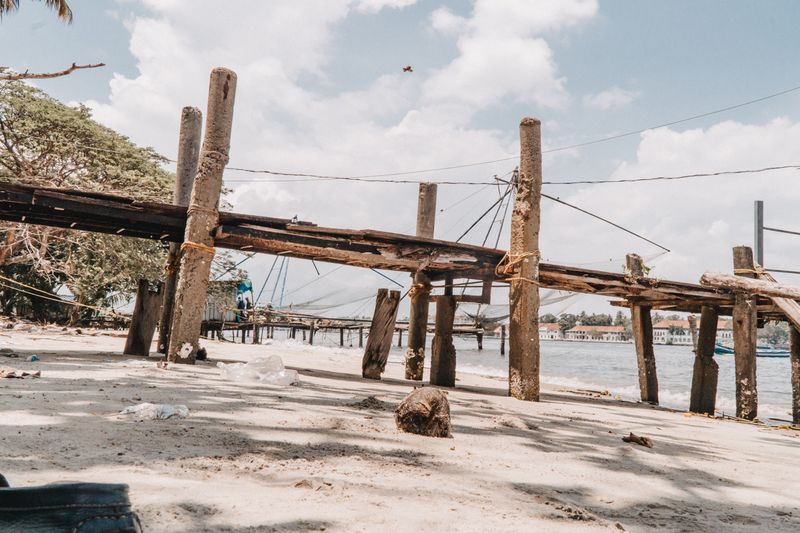Tropical Storm Idalia Potentially Turning into a Hurricane, Threatening Southern U.S.
The Current Situation
The National Hurricane Center has reported that Tropical Storm Idalia is currently near the coast of Cuba and has the potential to make landfall as a hurricane in the southern U.S. At its current state, the storm has maximum sustained winds of 60 mph and is expected to become a hurricane on Tuesday in the Gulf of Mexico. The latest forecasts indicate that Idalia could approach Florida on Wednesday with winds reaching up to 100 mph, making it a Category 2 hurricane.
Possible Impact and Concerns
One of the main concerns is the potential storm surge along Florida’s west coast, which could reach up to 11 feet. This could lead to destructive flooding in communities along the coast. Jamie Rhome, deputy director of the National Hurricane Center, emphasizes that even a relatively weak system or a near miss could still produce significant storm surge. Therefore, all areas along the Florida Peninsula need to be vigilant and prepared.
In Cedar Key, a fishing village located on the Gulf of Mexico, a storm surge is of particular concern. If the storm strikes just north of the area, Cedar Key would be directly impacted by the powerful surge on its southeastern side. There are worries about a storm surge of two to five feet, and if the surge reaches five feet, it could cover most of downtown Cedar Key. Other coastal areas in Mexico, such as the Yucatán and Quintana Roo states, may also face intense rainfall and flooding as a result of Idalia.
Preparations and Warnings
Florida’s emergency officials have urged residents to keep their vehicle gas tanks at least half full in case of evacuation. They also recommend being prepared for power outages, particularly in the Tallahassee region, where many trees and power lines could be knocked down by the storm. The state has mobilized 1,100 National Guard members and has resources such as high-water vehicles and aircraft ready for rescue and recovery efforts.
Thirty-three Florida counties are currently under a state of emergency, and residents in the storm’s path should expect power outages and make necessary preparations. The situation remains fluid, and Florida Governor Ron DeSantis highlights the uncertainty in the forecast, emphasizing the need to stay informed and heed official warnings.
Analysis and Advice
The threat posed by Tropical Storm Idalia reinforces the need for effective disaster preparedness and mitigation efforts. With the increasing frequency and intensity of tropical storms and hurricanes, it is essential for communities, governments, and individuals to be proactive in ensuring their safety and minimizing damage.
Climate Change and Extreme Weather Events
The National Oceanic and Atmospheric Administration recently revised its hurricane season forecast to predict that the 2023 season would be busier than initially anticipated. One of the contributing factors is the significantly warmer ocean temperatures, which provide fuel for the formation and intensification of hurricanes.
This highlights the growing impact of climate change on extreme weather events. Warmer oceans, rising sea levels, and changing atmospheric conditions all contribute to the increased frequency and intensity of storms. As a society, we must address the root causes of climate change and work towards sustainable solutions to mitigate its impacts.
Community Resilience and Infrastructure
Communities in vulnerable areas, such as those along Florida’s west coast, must invest in building resilience to withstand the impacts of tropical storms and hurricanes. This includes robust infrastructure, early warning systems, and effective emergency response plans.
Individuals also have a role to play in disaster preparedness. Being informed about evacuation routes, having necessary supplies on hand, and staying updated on weather forecasts are all crucial steps to ensure personal safety during such events.
Government Response and Preparedness
The response and preparedness of the government are also crucial in mitigating the impacts of storms. Florida’s mobilization of National Guard members, resources, and the declaration of a state of emergency demonstrate the importance of proactive measures in protecting individuals and communities.
Furthermore, government agencies must invest in research and development to improve the accuracy of forecasts. This will enable more effective emergency planning and resource allocation.
Conclusion
The potential threat posed by Tropical Storm Idalia turning into a hurricane serves as a reminder of the increasing risks associated with climate change and extreme weather events. It also underscores the importance of community resilience, government preparedness, and individual responsibility.
As the storm approaches, it is crucial for residents in the affected areas to heed official warnings, prepare for potential evacuations, and stay informed about the evolving situation.

<< photo by COARSE +FINE >>
The image is for illustrative purposes only and does not depict the actual situation.
You might want to read !
- Tropical Storm Elsa Triggers Hurricane Watch for Florida’s Gulf Coast
- Tropical Storm Harold: Assessing the Impact of Heavy Rain in Texas, The Aftermath Revealed
- Texas Battling Tropical Storm Harold: Flash Floods Imperil Landfall
- Florida’s Future in the Balance: Analyzing Three Determining Factors for the Gulf Storm
- A Promising Frontier: Investing Opportunities Abound in the Gulf of Mexico
- The Rise of Rookie Quarterbacks: C.J. Stroud to Lead Texans in Week 1
- ‘Hannah Montana’ actor Mitchel Musso arrested: Reflecting on child stars and the perils of fame




